Information
Tournament Format
The 8 teams are divided into two, four-team groups in the Preliminary Round with the top-four seeded teams in Group A and the others in Group B.
After a single round-robin series in each group, the four teams from Group A and the best two teams from Group B advance to the Playoff Round while the third- and fourth-placed team in Group B will play a best-of-three relegation round series.
The two top-seeded teams from Group A will receive Quarter-Final Round bye thus moving automatically to the Semi-Finals. The Quarter-Finals will be played between 3A-2B and 4A-1B. The winner of each Quarter-Final moves onto the Semi-Finals.
The winner of each Semi-Final game will move onto the Gold Medal Game, while the losers will play in the Bronze Medal Game.
Relegation format
The two last-placed teams play a best-of-three Relegation Round series. The third game is only played if needed. The winner of the series plays again at the 2018 IIHF Ice Hockey U18 Women's World Championship, while the loser will be relegated to Division I.
Three Point System
For all games points shall be awarded as follows:
- 3 points for the winning team at the conclusion of regulation time
- 1 point for both teams at the conclusion of regulation time if the game is tied
- An additional point earned for the team winning the game in a 5-minute overtime period, or the Penalty-Shot Shootout if the teams are still tied following conclusion of the overtime period
- 0 points for the team losing the game in regulation time
Overtime Operations
If a game is tied at the end of regulation time, a five-minute overtime period shall be played. The teams will change ends for the overtime period. The game will end when the five minutes has expired or when a goal is scored; the scoring team will be declared the winner. If no goal is scored in the overtime period then the Game Winning Shots Procedure will apply. All overtime periods of any IIHF game shall be played with each team at the numerical strength of three (3) skaters and one (1) goalkeeper for games of the preliminary round.
Overtime procedure in Play-Off Games:
- In case of a tie at the conclusion of regulation time in a Relegation Playoff, Placement Playoff, Quarter Final, Semi Final and Bronze Medal Game, there will be a 10-minute sudden-death overtime period played.
- The teams will change ends for the overtime period.
- The overtime period shall be played with each team at the numerical strength of four (4) skaters and one (1) goalkeeper.
- The team, which scores a goal during this period is the winner.
- In the Gold Medal game there will be a 20-minute sudden-death overtime period, following a 15-minute intermission during which the ice will be resurfaced.
- The teams will change ends.
- The overtime period shall be played with each team at the numerical strength of five (5) skaters and one (1) goalkeeper.
- The team which scores a goal during this period is declared winner.
- If no goal is scored during the sudden-death overtime, there will be Penalty-Shot Shootout (PSS) according to the Penalty-Shot Shootout Procedure.
Penalty-Shot Shootout Procedure
If no goal is scored in the overtime period then the Penalty-Shot Shootout (PSS) procedure will apply. The following procedure will be utilized:
- Three different shooters from each team - five in playoff and medal games - will take alternate shots, until a decisive goal is scored.
- If the game is still tied after three shots (respectively five in playoff and medal games) by each team, the PSS will continue with a tie-break shoot out by one player of each team, with a reversed shooting order. The same or new players can take the tie-break shots.
- The same player can also be used for each shot by a team in the tie-break shoot-out.
- Only the decisive goal will count in the result of the game.
- Shots will be taken at both ends of the ice. The area of the ice to be used will be dry scraped.
- A coin toss will determine which team takes the first shot, with the winner of the toss having the choice whether his team will shoot first or second.
- Any player whose penalty was not over when overtime ended cannot take the shots and must stay in the penalty box or in the dressing room.
- Once named, players may only be replaced in the event of injury or penalty.
- The substitute stand-by player is placed last in the shooting order.
- The goalkeepers will defend the same goal, as determined by the Referee. The goalkeepers from each team may be changed after each shot.
- The players of both teams will take the shots alternately until a decisive goal is scored.
- The decisive goal will be credited to the player who scored and to the goalkeeper concerned.
Tie breaking formula
The tie-breaking system for two teams with the same number of points in a standing will be the game between the two teams, the winner of the game taking precedence.
Due to the fact that the three-point system does not allow a game to end in a tie, then the following tie breaking procedure is applicable when three or more teams are tied in points in a Championship standing.
Should three or more teams be tied on points, then a tie breaking formula will be applied as follows, creating a sub-group amongst the tied teams. This process will continue until only two or none of the teams remain tied. In the case of two tied teams remaining, the game between the two would then be the determining tie-breaker as the game could not end as a tie. In the case of none of the teams being tied, the criteria specified in the respective step applies.
Step 1: Taking into consideration the games between each of the tied teams, a sub-group is created applying the points awarded in the direct games amongst the tied teams from which the teams are then ranked accordingly.
Step 2: Should three or more teams still remain tied in points then the better goal difference in the direct games amongst the tied teams will be decisive.
Step 3: Should three or more teams still remain tied in points and goal difference then the highest number of goals scored by these teams in their direct games will be decisive
Step 4: Should three or more teams still remain tied in points, goal difference and goals scored then the results between each of the three teams and the closest best-ranked team outside the sub-group will be applied. In this case the tied team with the best result (1. points, 2. goal difference, 3. more goals scored) against the closest best ranked-team will take precedence
Step 5: Should the teams still remain tied, then the results between each of the three teams and the next highest best-ranked team outside the sub-group will be applied.
Step 6: Should the teams still remain tied after these five steps have been exercised then Sport considerations will be applied and the teams will be ranked by their positions coming into the Championship (seeding).
Final Ranking
The gold medal game and bronze medal game will determine the final ranking for the top-4 teams. The eliminated teams from the preliminary round plus the losing teams of the quarter-finals will be ranked following their positions in the groups preceding the quarter-final round.
The final ranking will follow the following procedure:
1. Higher position in the group,
2. Higher number of points,
3. Better goal difference,
4. Higher number of goals scored for,
5. Better seeding number
More information
Click here to download the IIHF’s Rule Book and Sport Regulations.
Eligibility
To play in the IIHF World Championship, the Olympic ice hockey tournament and the qualifications to these competitions, players must fulfill the following qualification requirements:
- Each player must be under the jurisdiction of an IIHF member national association
- Each player must be a citizen of the country he or she represents.
Acquiring a new national eligibility (The ‘one-year’ case)
When a female player has changed her citizenship or has acquired another citizenship and wants to participate for the first time in an IIHF competition representing her new country she must:
- Prove that she has participated on a consistent basis for at least one hockey season and have been member of the new national association for at least 12 consecutive months during that period during which she has neither transferred to another country nor played ice hockey within any other country.
- Have an international transfer card (ITC) that shows the transfer to the national competition of her new country and which was approved and dated at least one year before the start of the IIHF competition in which she wishes to participate.
Change of national eligibility (The ‘four-year’ case)
A player, who has previously participated in IIHF competition, can switch national eligibility (but only once in a player's life) if:
- She is a citizen of the new country of her choice.
- She has participated for at least four consecutive years (1460 days) in the national competitions of her new country, during which period she has neither transferred to another country nor played ice hockey within any other country and has not played for her previous country in an IIHF competition during this four-year period.
- She has an international transfer card (ITC) that shows the transfer to the national competition of her new country and which was approved and dated at least four years before the start of the IIHF competition in which she wishes to participate.
History
| Year | Gold | Silver | Bronze | Venue |
| 2008 | USA | Canada | Czech Republic | Calgary |
| 2009 | USA | Canada | Sweden | Fussen |
| 2010 | Canada | USA | Sweden | Chicago |
| 2011 | USA | Canada | Finland | Stockholm |
| 2012 | Canada | USA | Sweden | Zlin, Prerov |
| 2013 | Canada | USA | Sweden | Heinola, Vierumäki |
| 2014 | Canada | USA | Czech Republic | Budapest |
| 2015 | USA | Canada | Russia | Buffalo |
| 2016 | USA | Canada | Sweden | St. Catharines |
| 2017 | USA | Canada | Russia | Zlin, Prerov |
Zlin
With nearly 80,000 inhabitants, the city of Zlin is the natural centre of South-Eastern Moravia and the Zlin Region.
The first written mention of the city comes already from the year 1322. Back then it was owned by Queen Elizabeth, widow after the Czech king Wenceslaus II. Later the local estate was acquired by Bishop Albrecht von Sternberg. The estate’s successful growth was interrupted only by the Thirty Years’ War, during which it was ravaged several times. In 1894, the Bata siblings founded the first shoemaking factory in Zlin, and in 1907 the local voters elected T.G. Masaryk as a Member of the Vienna Parliament. The population grew from 4,500 in 1921 to four times the number in 1930 and to nearly nine times the number in 1937.
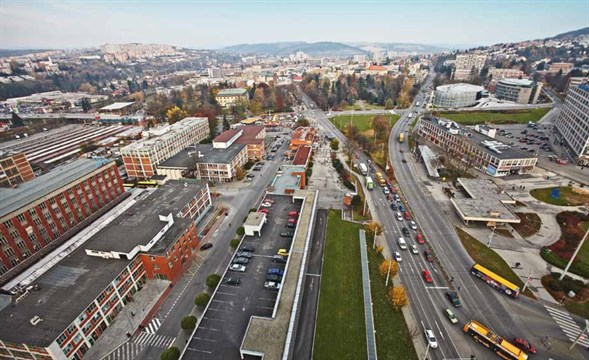
SHOEMAKING EMPIRE
When the shoe magnate Tomas Bata became Mayor in 1923, another period of stormy growth continued, for which Zlin was also called the Mecca of modern architecture and the city of the century. The originally small town transformed into a centre of modern, functionalist architecture. A number of department stores, hotels, a large hospital, schools, apartments and family houses were built, as well as the Zlin film studios. During its biggest boom, i.e., before World War II, Bata’s factories employed more than 65,000 people - over 40,000 in Czechoslovakia and 25,000 abroad.
THE REGION’S METROPOLIS
After World War II, the shoe production was nationalized and in 1949 Zlin was renamed to Gottwaldov. The original name was reinstated only in 1990. After this year, the city became a statutory city and in 2001 it became the metropolis of the Zlin Region. The Tomas Bata University was opened in the city in the year 2000 and in 2009 the city was declared a part of the European cultural Heritage.
FAMOUS PEOPLE FROM ZLIN
A number of famous people were born or lived in Zlin. Among the most important are factory owner Tomas Bata; academician and inventor of contact lenses Otto Wichterle, British playwright Tom Stoppard, travellers Jiri Hanzelka and Miroslav Zikmund, film makers Hermina Tyrlova and Karel Zeman, writer Ludvik Vaculik, architect Eva Jiricna, entrepreneur Ivana Trump and sculptor Vincenc Machovsky. Famous athletes include four-time Olympic champion and holder of many world records Emil Zatopek, athlete Tomas Dvorak, skier Olga Charvatova, tennis player Jiri Novak and of course hockey players such as Roman Hamrlik, Roman Cechmanek, Karel Rachunek and Petr Cajanek.
Prerov
Due to its geographical location, Prerov with a population that exceeds 45,000 is at the crossroads of Moravia. It is located in the Upper Moravian Graben, on the Becva River. Archaeological findings prove that the location where it lies was settled already by the mammoth hunters.
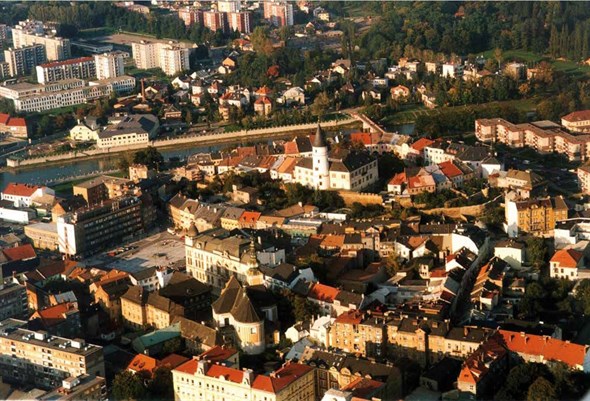
CITY OF THE TEACHER OF NATIONS
Written historical sources, or more precisely the Olomouc Bishop’s deed, mention Prerov in the year 1141; it was promoted to a royal city by king Premysl Otakar II in 1256. During the Hussite Wars, it became an important centre of the Calixtines. Later, the most important figures of the Unity of the Brethren lived and worked in the city: the author of Czech grammar and Bishop Jan Blahoslav and philosopher, theologian and teacher John Amos Comenius. The Teacher of Nations got his education here at the Latin school, became a priest and also worked in the city as a teacher. In the next period the city was owned by famous aristocrats, the Pernstejns and Zerotins.
THE AA BROUGHT A BOOM
A new boom came in the 19th century and it had to do with the growth of railroad transportation. Back then, the railroad ran from Vienna to Olomouc and in the end it was also extended to Prague and up north to Bohumin. The city itself became famous especially for its manufacturing of agricultural machinery as well for education – the first agrarian school was founded here as well as the third Czech gymnasium on the territory of Moravia.
SOLDIERS, SCIENTISTS, ARTISTS
Famous people with a link to Prerov include the Swedish military leader Lennart Torstensson; builder Alois Negrelli; founder of Czech serology and immunology, Professor and Doctor Jan Kabelik; poets Josef Kainar and Oldrich Mikulasek; and legionnaire, commander of the Czech air force in Great Britain, General Karel Janousek. Athletes will certainly remember tennis player and Wimbledon winner Jana Novotna; swimmer and iron man, the first Czechoslovak man to conquer the English Channel, Frantisek Venclovsky; as well as the renowned ice hockey coach Milos Riha.
CONTEMPORARY PREROV
Prerov became a statutory city in 2006, is home to important companies and a helicopter air force base. In the future it could also become an important water crossroads and one of the main ports on the planned Danube – Oder – Elbe water corridor.
Arenas
PSG ARENA
PSG Arena Zlin was opened at the end of 2004. It currently serves especially the youth teams of HC PSG Zlin.
The home club, which plays in the traditional yellow-blue colours, was founded in 1928. It won the highest Czech league in 2004, and it finished second in 1995, 1999 and 2005. Among its most famous players are world champions Jiri Kralik, Antonin Stavjana, Rostislav Vlach, Roman Meluzin, Radek Bonk, Karel Rachunek and Petr Cajanek; the Hamrlik brothers Roman and Martin, Pavel Janku and Petr Leska. Immediately adjacent to the PSG Arena is the Ludek Cajka Ice Stadium, which was built in 1957 and covered by a roof in 1962.
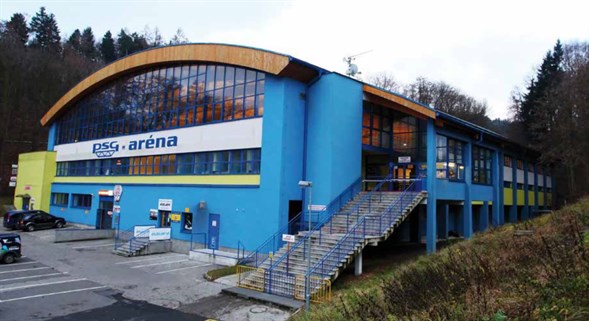
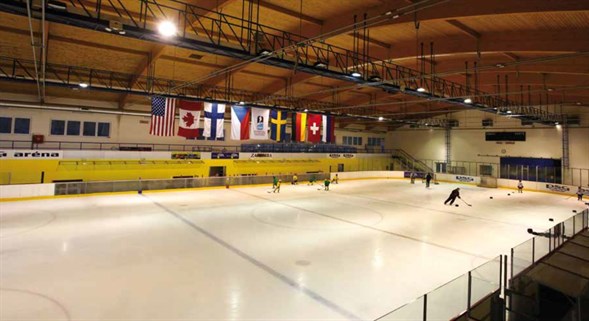
ARENA PREROV
The Ice Stadium in Prerov was opened in the fall of 1971, and in 2009 it was completely reconstructed.
The home club HC Zubr Prerov, which was founded in 1928 and which plays in blue-yellow colours, is one of the traditional participants in the second and third highest league. It achieved its biggest success in the 1981/82 season, when it became champion of the Czech Republic and it only lost in the battle for qualification into the highest league to Slovan Bratislava. The club’s most famous players include, for example, coach Milos Riha and national team members Josef Hrabal and Tomas Kundratek. At the present time, the players of HC Zubr Prerov play in the third-highest league in the eastern division.
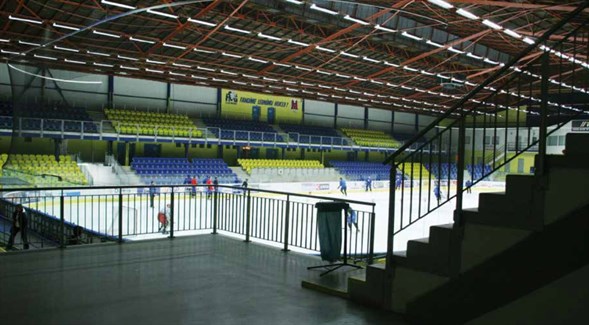
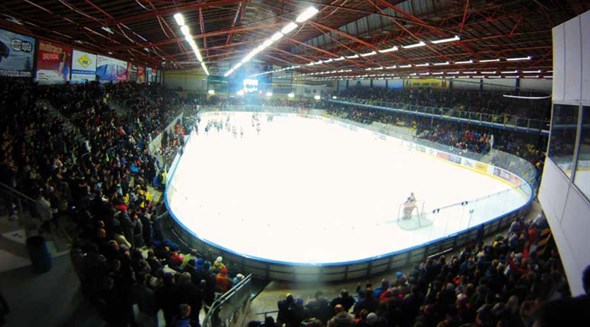
Hotels
ZLIN
INTERHOTEL MOSKVA
Interhotel Moskva is ideal congress centre with great location in the very center of Zlin. Offers exceptional comfort in modern rooms, high-tech and extraordinary variable meeting facilities and extensive catering options.
The newly renovated hotel meets the strict requirements of Category 4 **** offering two large conference halls and five lounges.
Unique is also offer of five different restaurants, including the popular Irish Pub Steakhouse Legenda or a genuine Indian restaurant Sri Lanka with an authentic chef coming directly from this magical island.
Interhotel Moskva
Namesti prace 2512
760 01 Zlin
Phone: +420 577 561 111
E-mail: [email protected]
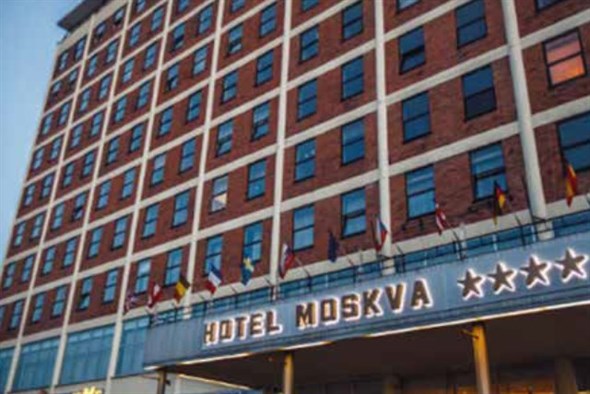
HOTEL BALTACI ATRIUM
The modern five-star Hotel Baltaci Atrium offers the highest level of the hotel service. In addition to luxury accommodation and catering there are available also attractive premises of hotel, which provides the ideal rear for conferences, seminars, training, weddings or celebrations. Original Pilsner restaurant offers mostly traditional Czech cuisine. Restaurant Café Atrium will ensure a pleasant and unique atmosphere below the glass pyramid.
You can enjoy relaxation in hotel private luxury wellness centre with whirling pool, dry/Finnish sauna, steam bath and relaxing pyramid.
Restaurant Café Atrium is a place with unique acoustics. Thanks to this and the personality of Vaclav Hudecek - and under his patronage, we organize a traditional series of classical concerts called Festival of music at the Baltaci called Vaclav Hudecek & friends.
Hotel Baltaci Atrium
Lesetin II/651
760 01 Zlin
Phone: +420 577 004 100
Mobile: +420 605 000 200
E-mail: [email protected]
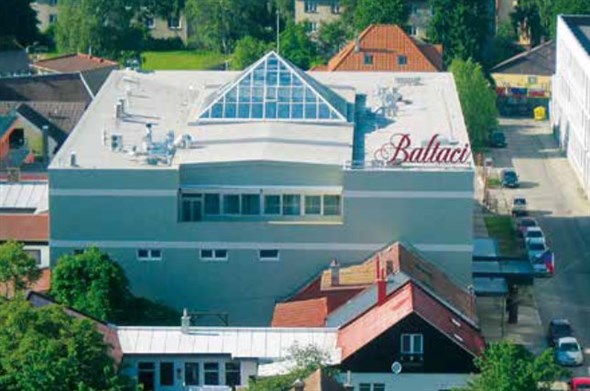
PREROV
HOTEL FIT
Hotel Fit offers quality accommodation at a high level, for great prices in 76 rooms of various categories. There are also held conferences, corporate events, social evenings, receptions and weddings.
The restaurant offers quality cuisine and deliver complex provision of catering services. The hotel has conference halls, restaurant and lounges, indoor golf simulator, sauna, tennis courts and a sports bar. Quality accommodation for great price that is Hotel Fit in Prerov.
For guest, there Business and Comfort class rooms and 4 suites. All rooms have private balconies and are equipped with separate bathroom and toilet, TV/SAT, telephone, WiFi Internet connection for free. All rooms are non-smoking.
The restaurant Harmony offers comfortable seating (150 seats) in a nice air-conditioned interior and a rich selection of meals. There are also organized gastronomic days of Czech or international cuisine.
In summer you can sit under sunshades on the terrace (40 places). During the day you can enjoy here breakfast, lunch and dinner or just a cup of coffee with a delicious dessert, the offer includes sundaes, Pilsner beer and fine wines. In good weather specialties are prepared on the grill.
The hotel offers indoor golf simulator Fullswing version 3.0. There is also a practice driving range and putting green with five holes. The hotel sports centre also offers pleasant relaxation in the sauna with massages, refreshments and comfortable seating areas in the sports centre. Near the hotel there is a tennis centre. For ladies there are also beauty and hairdressing services.
Hotel FIT *** in Prerov features conference rooms for up to 370 persons on an area exceeding 370 m2. All rooms and lounges are equipped with the latest technology, which offers quality facilities for the organizers of all types of events. Complete security services catering to all events, including decorations.
Hotel FIT
Dvorakova 21b
750 02 Prerov
Phone: +420 583 842 416 - 418
Mobile: +420 724 559 790
E-mail: [email protected]
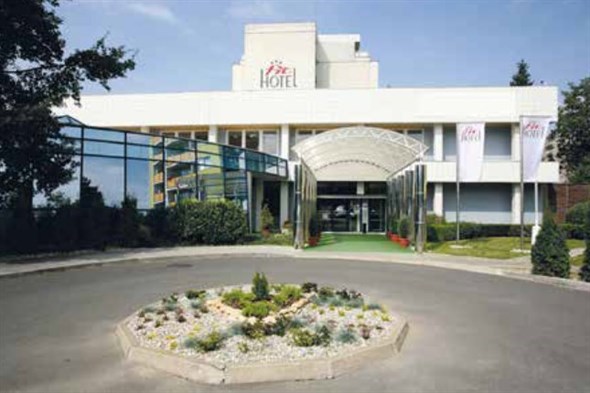
Organizing Committee
PRESIDENT
Karel Jankovic, CIHA Board Member
GENERAL SECRETARY
Marketa Sterbova
Ceskomoravska 2420/15, 190 00 Prague 9, Czech Republic
Tel.: +420 211 158 051, GSM: +420 733 146 939
[email protected], [email protected]
VENUE, ACCOMMODATION
Tomas Jankovic
Ceskomoravska 2420/15, 190 00 Prague 9, Czech Republic
GSM: +420 767 533 722, [email protected]
TRANSPORTATION
Lukas Jankovic
Breznicka 4068, 760 01 Zlin, Czech Republic
[email protected]
SPORT, TECHNICAL
Martin Loukota
Ceskomoravska 2420/15, 190 00 Prague 9, Czech Republic
Tel.:+420 211 158 026, GSM: +420 724 046 410
[email protected]
MARKETING, TV, MEDIA, MEMBER ASSOCIATION PERSON
Jan Cerny
Ceskomoravska 2420/15, 190 00 Prague 9, Czech Republic
Tel.:+420 211 158 019, GSM: +420 724 349 031
[email protected]
RESULTS AND STATISTICS, TV STREAM
Ondrej Kalat
Ceskomoravska 2420/15, 190 00 Prague 9, Czech Republic
Tel.:+420 211 158 056, GSM: +420 601 589 161
[email protected]
MEDICAL OFFICER
Miroslav Budos
GSM: +420 777 608 486
[email protected]

















































